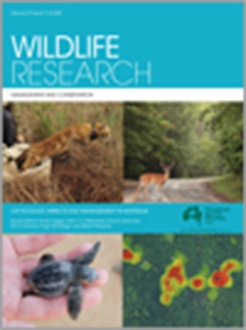Context. Understanding the diet of invasive species can inform the potential for their distribution into novel habitats. Fallow deer are well established in the grassy woodlands of central Tasmania, Australia, in environments generally considered to be their optimum habitat. They are also increasing their range. The potential range of fallow deer in Tasmania will depend on their ability to vary their diet to exploit new habitats. Diet flexibility will also determine the ecological impacts that fallow deer might have in novel habitats.
Aims. We compared the diets of fallow deer in a lowland grassy woodland, where deer have been established for over 150 years, with diets of deer in highland woodlands and forest with less grass cover and higher rainfall, where deer have been established for a shorter time (<50 years). We expected that fallow deer in grassy woodlands would mainly eat grass and forbs, and we wanted to know to what extent the diet of deer differed between habitats.
Methods. A metagenomic analysis was performed on fallow deer faecal pellets collected at one lowland and three highland study areas. The method was chosen to maximise information on taxonomic composition of diet and identify plant species that might be affected by deer herbivory to the lowest possible taxonomic level.
Key results. Fallow deer ate a wide variety of plant taxa. Diets varied among study areas. In the lowland study area, deer predominantly ate forbs and grasses. In the highland study area deer were more likely to browse on eucalypts and a variety of shrubs.
Conclusions. Fallow deer in Tasmania have a broad dietary niche. Availability of specific plant taxa is unlikely to limit fallow deer expansion into most new habitats.
Implications. Without stronger management strategies, deer are likely to further increase their range in Tasmania, including into areas with high conservation values. The potential impacts on these areas may be high.






